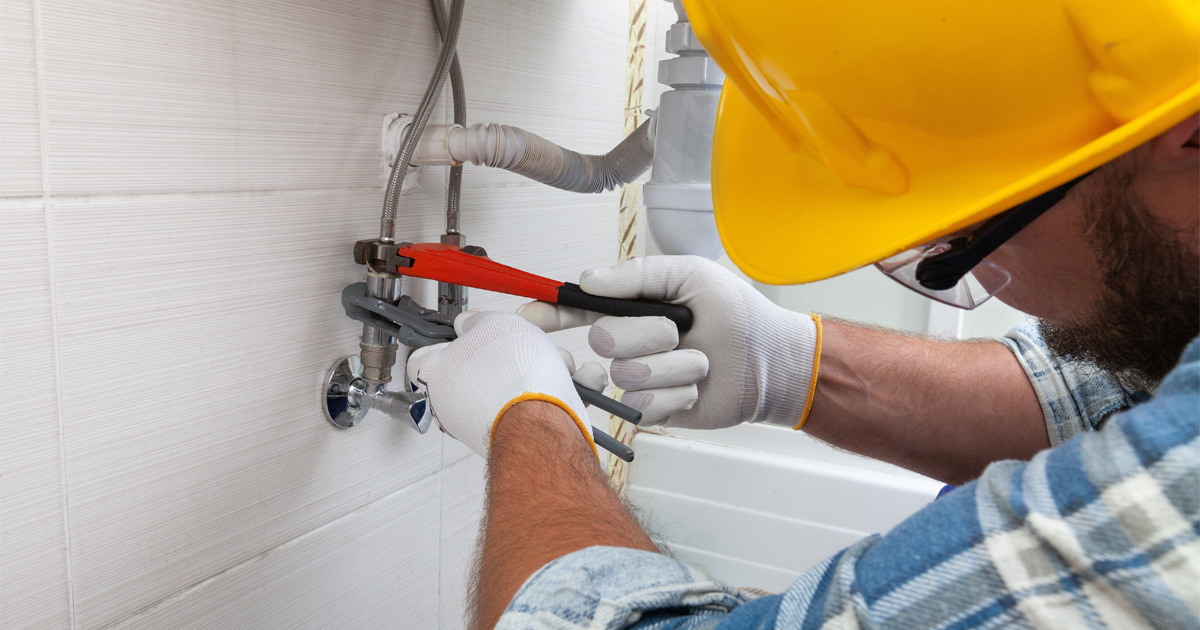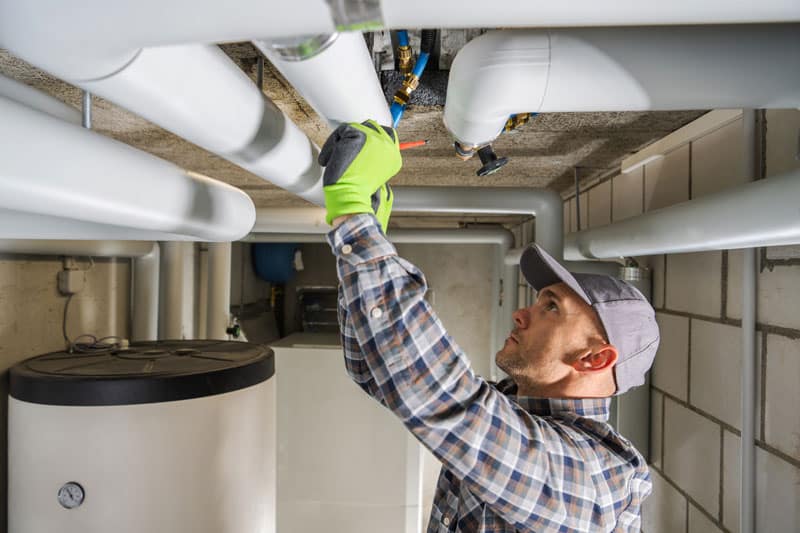Unpacking the Core Concepts of Home Plumbing: A Beginner's Overview
Unpacking the Core Concepts of Home Plumbing: A Beginner's Overview
Blog Article
They are making a number of good annotation regarding What to Know About Plumbing: Basics, Tips, and Insights as a whole in the content directly below.

Plumbing is a crucial facet of any home, responsible for supplying clean water for alcohol consumption, cooking, and bathing, as well as eliminating wastewater safely. Comprehending the fundamentals of home plumbing is vital for every house owner to make certain correct upkeep, troubleshooting, and, if needed, repair services. In this novice's guide, we'll cover the essential concepts of home plumbing to aid you come to be extra aware of how it works.
Water Heater
The water heater is in charge of home heating water for domestic usage, including showering, cooking, and cleansing. Usual sorts of water heaters consist of tank-type water heaters, tankless (on-demand) hot water heater, and heat pump hot water heater. The hot water heater is connected to the supply of water system and provides hot water to plumbing components as needed.
Water drainage System
The drain system removes wastewater from your home and lugs it away to a sewer treatment facility or septic system. It contains a network of pipelines, fittings, and fixtures that move wastewater from plumbing fixtures to the primary sewage system line or septic tank. Appropriate water drainage is necessary to stop blockages, back-ups, and sewage leakages.
Ventilation System
The ventilation system helps preserve appropriate air pressure and stop drain gases from entering your home. Vent pipelines, likewise known as vent heaps, extend from plumbing fixtures to the roof, allowing sewer gases to get away safely outdoors. Ventilation pipes likewise allow air to go into the water drainage system, assisting in smooth wastewater flow and preventing suction or vacuum effects.
Water System
The water supply system brings tidy water into your home from a local water resource or an exclusive well. It consists of a primary water line that attaches to your home's plumbing system, generally located underground. A water meter measures the amount of water consumed, while a shut-off shutoff permits you to regulate the circulation of water right into your home.
Plumbing Components
Plumbing fixtures are devices that supply water to various parts of your home and consist of sinks, faucets, toilets, showers, tubs, and appliances such as dish washers and cleaning makers. Each component is linked to the supply of water system using pipes and fittings and might have its shut-off valve for maintenance or emergencies.
Common Plumbing Tools
Having the right devices accessible is essential for executing fundamental plumbing repair services and upkeep tasks. Common plumbing tools consist of adjustable wrenches, monkey wrench, pliers, pipeline cutters, hacksaws, plungers, augers (or drainpipe serpents), and Teflon tape. Having these tools easily available can help you deal with minor plumbing problems efficiently.
Standard Plumbing Repairs
While some plumbing fixings might need expert assistance, lots of typical issues can be attended to with fundamental do it yourself techniques. Discovering how to fix a leaking faucet, unclog a drainpipe, change a toilet flapper, or repair a trickling showerhead can conserve you time and money on plumbing repair services.
Verdict
Comprehending the basics of home plumbing is necessary for every single property owner to keep a risk-free, practical, and reliable plumbing system. By familiarizing on your own with the water system, plumbing fixtures, drain system, ventilation system, usual plumbing tools, and fundamental repair services, you can confidently resolve minor plumbing problems and ensure your home's plumbing system operates smoothly.
Plumbing Basics
Plumbing follows the basic laws of nature — gravity, pressure and water seeking its own level. Knowing this, you can understand its "mysteries" and make dozens of fixes to your home's plumbing system. You can save yourself time, trouble and money!
The plumbing system in your home is composed of two separate subsystems. One subsystem brings freshwater in, and the other takes wastewater out. The water that comes into your home is under pressure. It enters your home under enough pressure to allow it to travel upstairs, around corners or wherever else it's needed. As water comes into your home, it passes through a meter that registers the amount you use. The main water shut-off, or stop, valve is typically located close to the meter. In a plumbing emergency, it's vital that you quickly close the main shutoff valve. Otherwise, when a pipe bursts, it can flood your house in no time. If the emergency, like a leak, is confined to a sink, shower, or toilet, however, you may not want to turn off your entire water supply. Therefore, most fixtures should have individual stop valves.
Water from the main supply is immediately ready for your cold water needs. The hot water supply, however, requires another step. One pipe carries water from the cold water system to your water heater. From the heater, a hot water line carries the heated water to all the fixtures, out-lets, and appliances that require hot water. A thermostat on the heater maintains the temperature you select by turning the device's heating elements on and off as required. The normal temperature setting for a home water heater is between 140 degrees F and 160 degrees F (60 and 71 Celsius) but 120 degrees F (49 C) is usually adequate and is also more economical. Some automatic dishwashers require higher temperature water, though many of these have a water heater within them that boosts the temperature another 20 degrees F.
Drainage Systems
Whether your home is on a sewer or septic system, the systems within your home are essentially the same. Drainage systems do not depend on pressure, as supply systems do. Instead, waste matter leaves your house because the drainage pipes all pitch, or angle, downward towards the sewer. Gravity pulls the waste along. The sewer line continues this downward flow to a sewage treatment facility or a septic tank.
While the system sounds simple, there's more to it, including vents, traps and clean outs. The vents sticking up from the roof of your house allow air to enter the drainpipes. If there were no air supply coming from the vents, wastewater would not flow out properly and the water in the traps would need to be siphoned away.
Traps are vital components of the drainage system. You can see a trap under every sink. It is the curved or S-shape section of pipe under a drain. Water flows from the basin with enough force to go through the trap and out through the drainpipe, but enough water stays in the trap afterward to form a seal that prevents sewer gas from backing up into your home. Every fixture must have a trap. Toilets are self-trapped and don't require an additional trap at the drain. Older bathtubs frequently have drum traps, which not only form a seal against sewer gas but also collect hair and dirt in order to prevent clogged drains. However, drum traps aren't up to current code standards anymore. Some kitchen sinks have grease traps to collect grease that might otherwise cause clogging. Because grease and hair are generally the causes of drain clogs, traps often have clean-out plugs that give you easier access to remove or break up any blockage.
Since a drainage system involves all of these components, it is usually referred to as the DWV: the drain-waste-vent system. If water is to flow out freely and waste is to exit properly, all components of the DWV must be present and in good working order. Examine the pipes in the basement or crawl space under your house to help you understand the system better.
Supply and Drainage Subsystems
The supply and drainage subsystems are two distinct operations, with no overlapping between them. There are bridges between the two, however, and the bridges are what make the plumbing system worth having. In plumbing jargon, any bridge between the supply and drainage systems is a fixture.
Toilets, sinks, and tubs are fixtures. In addition, an outside faucet is a fixture and so is a washing machine. All devices that draw freshwater and discharge wastewater are fixtures, and all are designed to keep the supply and drainage systems strictly segregated.
Some fixtures have individual supply shutoff valves so you don't need to close the main shutoff to repair them. It's a good idea to make sure everyone in the family knows the location of the main shutoff valve in your house as well as how to use it. You may want to tag the main shutoff valve so anyone can easily find it.
Before you embark on any plumbing repairs, always turn off the water supply to the fixture or the main shutoff. In addition, check with your local plumbing code official before you add or change any pipe in your house. You will learn what is allowed and what is prohibited and whether or not a homeowner is allowed to do his or her own work. If you get the green light, you can save yourself a lot of money by doing your own repairs.
https://home.howstuffworks.com/home-improvement/plumbing/plumbing-basics-ga.htm

Hopefully you enjoyed reading our topic about Plumbing basics: How your home plumbing works. Thank you so much for spending some time to read through our article. Sharing is caring. You won't know, you may just be helping someone out. Kudos for your time. Return soon.
Call Today Report this page